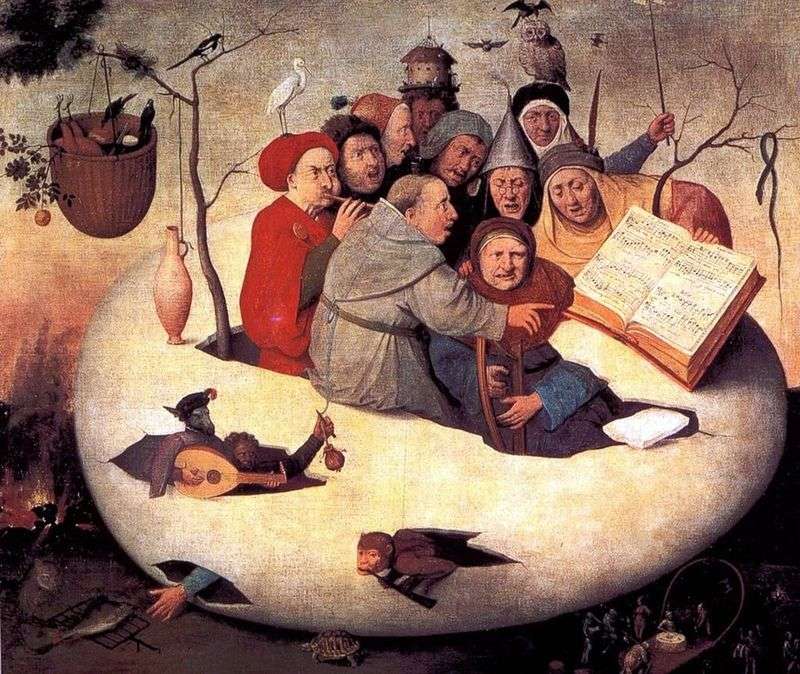
Earlier it was thought that the “Concert in the Egg” was a copy of the lost work of Hieronymus Bosch, as indicated by the presence of one of his drawings, which may have been a sketch for the same lost work. Then, during copying, waves were allowed – therefore, some details in the figure and the picture are significantly different. The picture, however, appeared precisely after the death of Bosch, if only because the notes depicted on it are the product of the Flemish composer Thomas Krekkillon, which he created in 1549.
Perhaps the artist, who made the copy, for some reason could not make out notes on the canvas of Bosch and took the first available modern ones. The work was bought in 1890 for 400 francs for the Lille Museum of Fine Arts from a Paris art dealer. The painting is currently exhibited at the Museum of Fine Arts in Lille, but its origin is still not completely clear.
Like many of Bosch’s works, this one, perhaps, contains a hint of alchemical experiments. So, everything that should be put in the atanor should be loaded into vessels, the shape of which is of great importance. The image of the hermetically sealed vessel was also a philosophical egg, occupying a large place in the artist’s paintings. An example is the “Concert in the Egg”. In addition, the “Concert in the Egg” seems to connect music with alchemy, but this concert is not really musical in fact: the instruments have only a symbolic meaning, depending on their form and position.
In the early paintings, the intonation of the artist is more ironic than angry: alchemy is seen by the artist as the stupidity of some and the scam of others and here it is presented caricatured, satirically.
A group of singers form a “yolk” of eggs, symbolizing a gathering of “peasants.” Egg on the grass occupies the central space.
Ten people singing and playing music, exactly and enthusiastically follow the score unfolded before them. One of the singers is so carried away by his songs that he does not notice that he has a purse cut off by some devil. In general, the scene resembles the plot of “Ship of Fools”. On the left is a wicker basket. in the form of a still life – drinks and food that are safely flocking birds – obviously, this is a symbol of excess. And here on the left below the hell fire burns. The picture is full and other characters characteristic of Bosch’s painting – an owl, a stork, a monkey with a flute and so on.
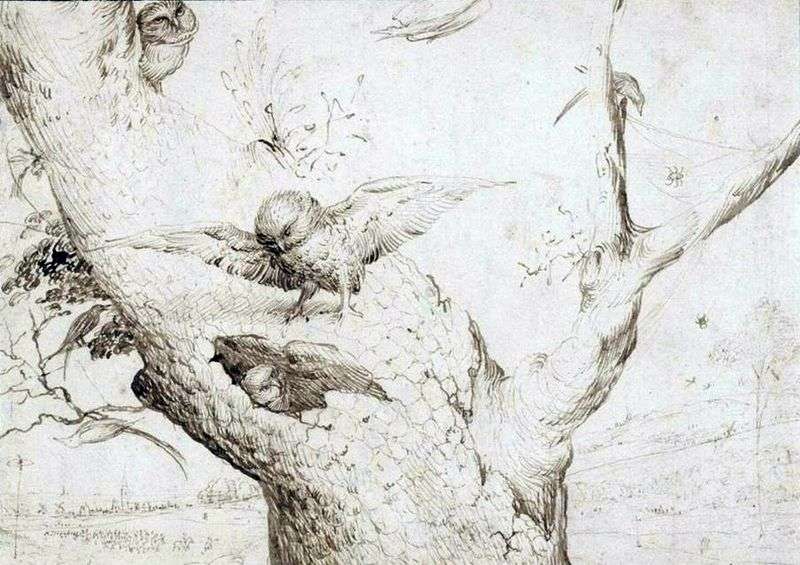 Nest of owls by Hieronymus Bosch
Nest of owls by Hieronymus Bosch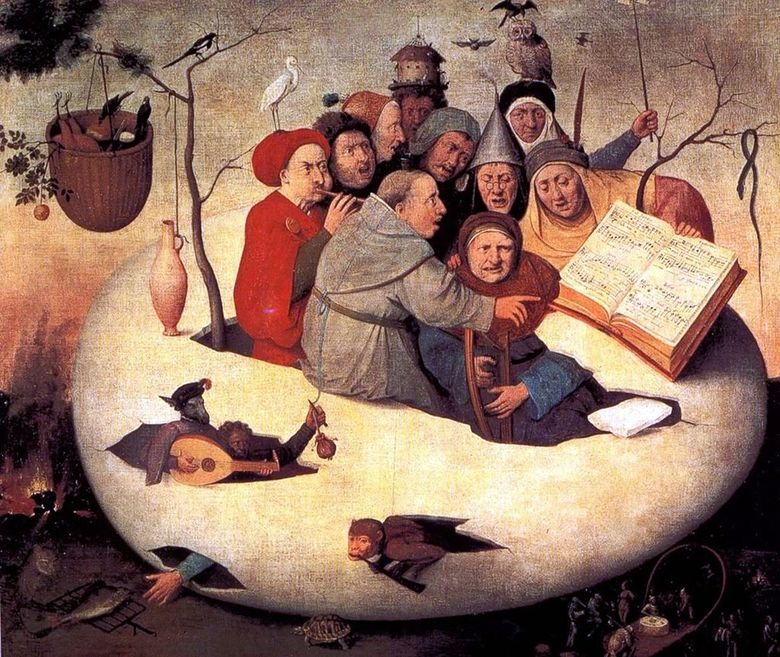 Concert d’oeufs – Jerome Bosch
Concert d’oeufs – Jerome Bosch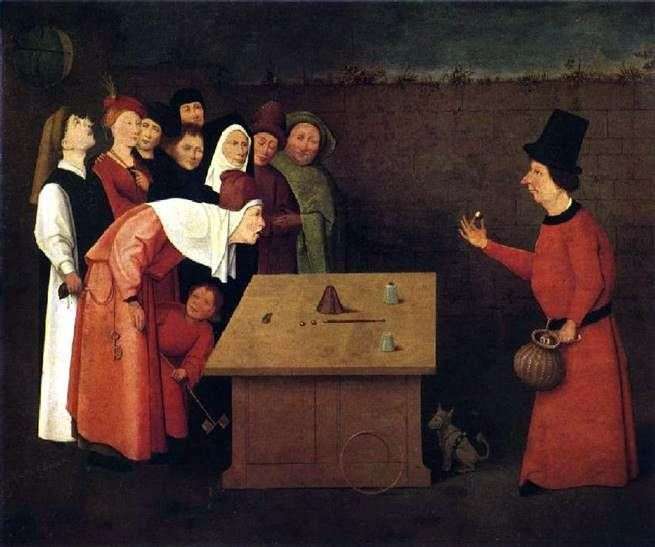 Magician Charlatan by Hieronymus Bosch
Magician Charlatan by Hieronymus Bosch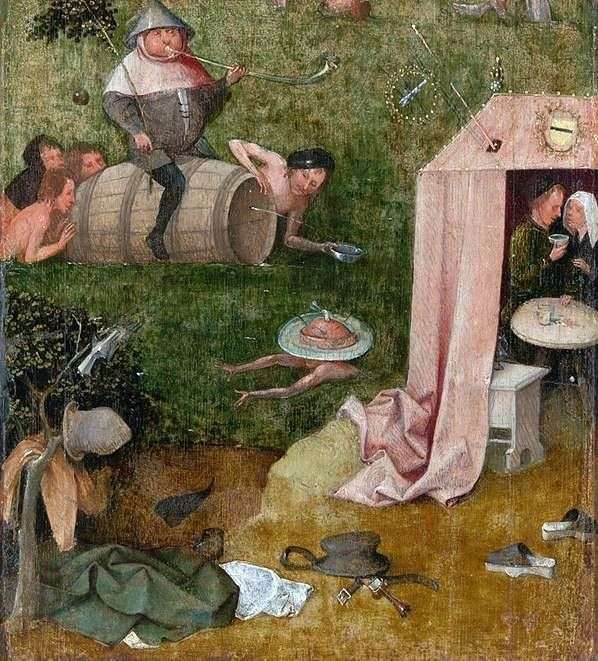 Allegory of gluttony and lasciviousness by Hieronymus Bosch
Allegory of gluttony and lasciviousness by Hieronymus Bosch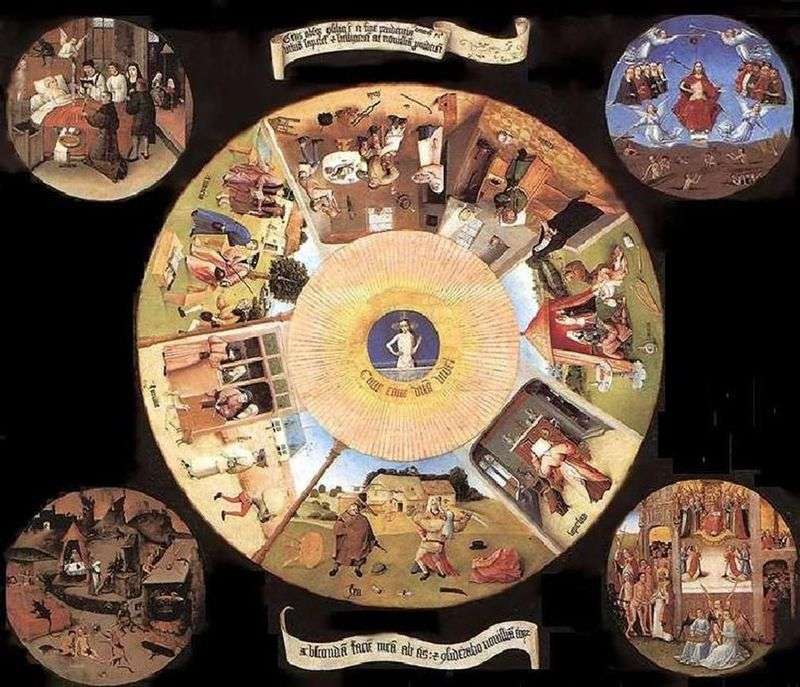 Seven deadly sins and the last four things by Hieronymus Bosch
Seven deadly sins and the last four things by Hieronymus Bosch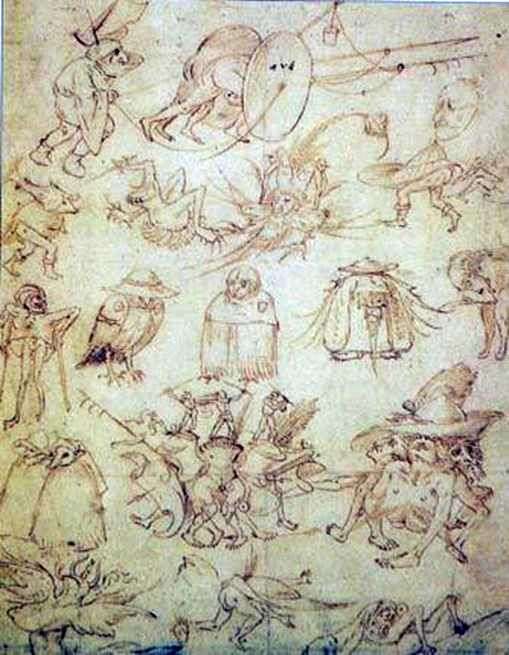 Grotesque sketches by Hieronymus Bosch
Grotesque sketches by Hieronymus Bosch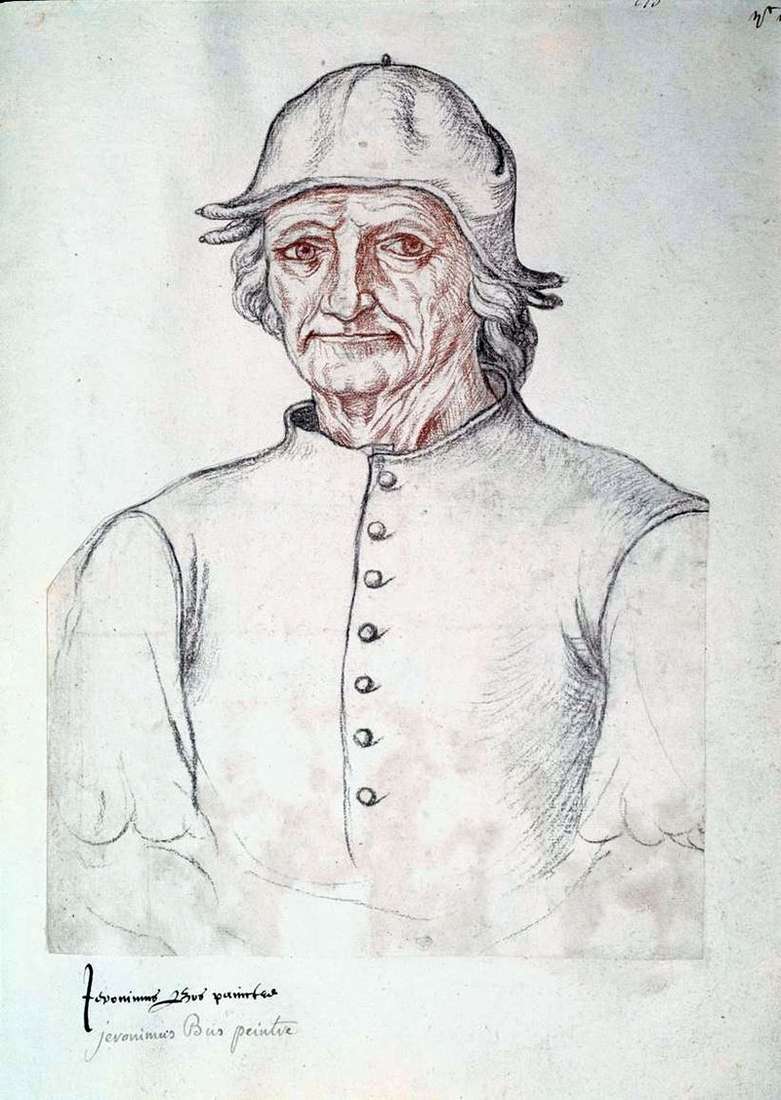 Self-portrait by Hieronymus Bosch
Self-portrait by Hieronymus Bosch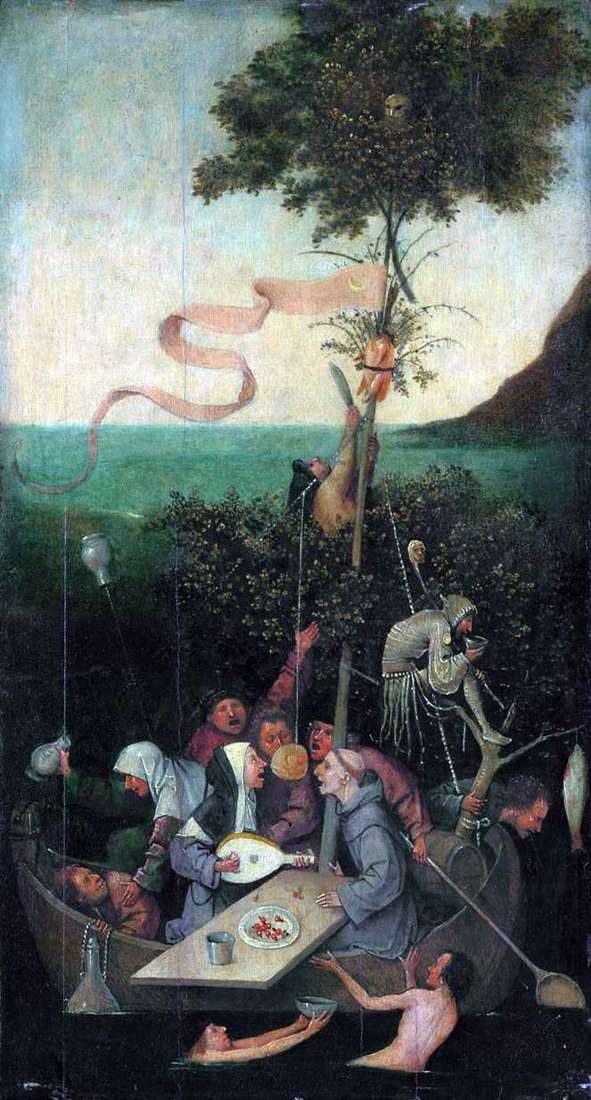 Ship of Fools by Hieronymus Bosch
Ship of Fools by Hieronymus Bosch